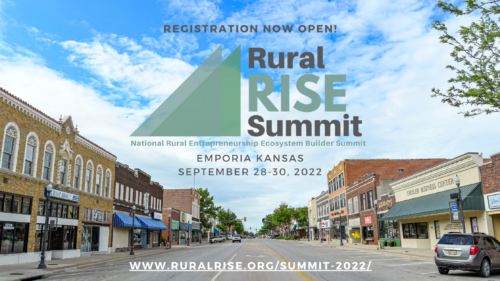Article originally posted @ https://www.mainstreet.org/blogs/national-main-street-center/2022/03/22/main-spotlight-findings-from-the-winter-2022-small
March 22, 2022 | Main Spotlight: Findings from the Winter 2022 Small Business Survey | By: Mike Powe, Ph.D., Director of Research at Main Street America, and Emi Morita, Research Analyst at Main Street America
Two years ago, as the pandemic began, small business owners saw their futures as dire. Nearly two-thirds of the 5,844 small businesses owners who responded to our March 2020 survey said they did not expect their businesses would survive business disruptions if they continued for five months. We braced for a tsunami of business closures across the country’s downtowns and neighborhood commercial districts. But it never came.
 Based on our data over the course of the last 24 months, it seems small businesses in Main Street communities showed their mettle as they hung through the tough times. The Paycheck Protection Program (PPP) undoubtedly played a major role in providing relief. Main Street America analysis of PPP data indicates that businesses located in Main Street districts received more than 150,000 loans totaling more than $8.5 billion dollars. But Main Street managers, pounding the pavement and working their phones, surely acted as first responders of sorts as well. In our December 2020 survey of Main Street managers, more than half of the managers and directors who responded indicated that their communities had actually had more business starts than business closures.
Based on our data over the course of the last 24 months, it seems small businesses in Main Street communities showed their mettle as they hung through the tough times. The Paycheck Protection Program (PPP) undoubtedly played a major role in providing relief. Main Street America analysis of PPP data indicates that businesses located in Main Street districts received more than 150,000 loans totaling more than $8.5 billion dollars. But Main Street managers, pounding the pavement and working their phones, surely acted as first responders of sorts as well. In our December 2020 survey of Main Street managers, more than half of the managers and directors who responded indicated that their communities had actually had more business starts than business closures.
In our Winter 2022 Small Business Survey, conducted last month, we see continued evidence of Main Street businesses’ resilience. We asked small business owners how confident they were feeling about their future. Responding on a ten-point scale, 26% of small business owners said they were extremely confident (10 out of 10), and 59% rated their confidence as an 8, 9, or 10.
Findings: Use of Technology
Use of e-commerce continues to rise but still doesn’t represent a robust revenue-generating component for most small businesses. In our original small business survey on the impacts of COVID-19, conducted in March 2020, 37% of small business owners said that their business had an online sales component. Two years later, in our current survey, that number is up: 44% now say they were generating revenue through e-commerce. The proportion of small businesses’ revenue coming through e-commerce has remained a small percentage, however. In the current survey, 79% of small businesses using e-commerce said online sales brought a quarter of their overall revenue or less, and more than half of respondents said e-commerce accounted for less than 10 of their total revenue. In March 2020, the survey indicated the exact same proportion of small businesses generated a quarter of their revenue or less online—79%.
Many small business owner respondents were testing out or considering new technologies and business model shifts that would reduce the time customers spent inside the business establishment. 46% of respondents had incorporated or were considering touchless payment options and 37% implemented or were considering taking orders online for in-store pickup. These changes, likely implemented to lessen stress around the risk of COVID-19 transmission, may well carry forward and become new expectations of consumers and therefore a new standard for businesses.
Findings: Concerns of Small Business Owners
The effects of the pandemic are still being felt in ways that are separate from public health concerns alone. More than half of small businesses owners said they were concerned about challenges with inflation (58%) and supply chain issues (57%). Asked about the degree to which they were concerned about several issues, more than two-thirds of respondents indicated that challenges with inflation were a major or very serious concern, and 61% said that supply chain issues were a major or very serious concern. In contrast, only 18% of small business owner respondents were concerned about abiding by COVID-related regulations, and among those who shared that concern, most (58%) indicated that it was not a major or very serious concern.

Workforce issues, also likely a continuing effect of the pandemic, were also frequently cited as a concern. 40% of small business owner respondents were concerned about challenges hiring and filling open positions with qualified applicants, and 33% were concerned about challenges keeping their business fully staffed. Among those who expressed these concerns, 65 % indicated that hiring and filling open positions with qualified applicants was a major or very serious concern, and 60% indicated that keeping their business full staffed was a major or very serious concern.
Small business owners were very concerned about their business fundamentals in some ways as well. The third most cited concern for small business owners was focused on attracting new customers and clients (52%). Meanwhile, 38% of respondents said they were concerned about retaining customers and clients, and 39% indicated they were concerned about shrinking margins for their businesses. Nearly three-quarters of respondents (74%) who expressed concern about shrinking margins indicated that that issue was either a major or very serious concern. No other single concern was so often rated as major or very serious.
Findings: Support Sought by Small Business Owners
All aspects of the Main Street Approach were reflected in the types of support desired by small business owners. There is a clear focus on ensuring continued economic vitality and resilience, reflected in the responses of 61% of small business owners who said they would like to see more incentives and financial support for small businesses. Increased district-wide marketing and promotion was of the second-most interest, with 56% of respondents indicating interest. Third, 37% of respondents expressed interest in there being stronger organization of businesses in the area, and in a close fourth, 35% of respondents indicated that they would like to see improvements to the physical design of their area (e.g., accessibility, lighting, wayfinding, streetscape, etc.). Interestingly, 32% of respondents were also interested in incentives, support, or technical assistance with storefront/façade renovations or energy-efficiency improvements.

Marketing, partnerships, and data were seen as the three topics or tools that small business owners were most interested in strengthening. More than half of respondents (55%) expressed a high or very high level of interest in strengthening their business’s marketing online or over social media. 38% of respondents expressed a high or very high level of interest in improving their partnerships with other local businesses or business groups, and 35% expressed a high or very high level of interest in leveraging data to improve marketing and inventory. Other topics or tools that were frequently cited as of high or very high interest include strengthening the business’s relationship with the local and state government (27%), e-commerce (25%), and expansion to new markets or locations (24%).

Conclusions and Next Steps
It’s clear that we’re in a very different place today than we were two years ago, as the severity of the COVID-19 pandemic became clearer both in terms of public health and economic outcomes. Main Street America’s data indicates that many small businesses, downtowns, and neighborhood commercial districts hung on and have come through stronger and more resilient than most would have predicted. But the pandemic is not yet behind us, either–whether in terms of COVID infections and hospitalizations, or in terms of ramifications for small business staffing and supply chain disruption.
There’s a clear analog for Main Street organizations in these terms, as well. Small businesses have largely survived, but that’s due in no small part to the Main Street managers and volunteers who have made a tremendous difference in supporting their business districts through a time of great turbulence and dislocation. And yet, there’s work to be done still: small business owners are looking for support with their economic vitality, district and façade design, marketing and promotion, and business organization and partnership.
As a next step with this survey, the Research Team at Main Street America will soon aggregate this data by Coordinating Program geographies and locales. As with our 2020 small business survey, we will publish a map that allows coordinators, directors, managers, and staff to access data on their city and state.
#Blogs
#MainSpotlight
#COVID-19
#MainStreetForward




